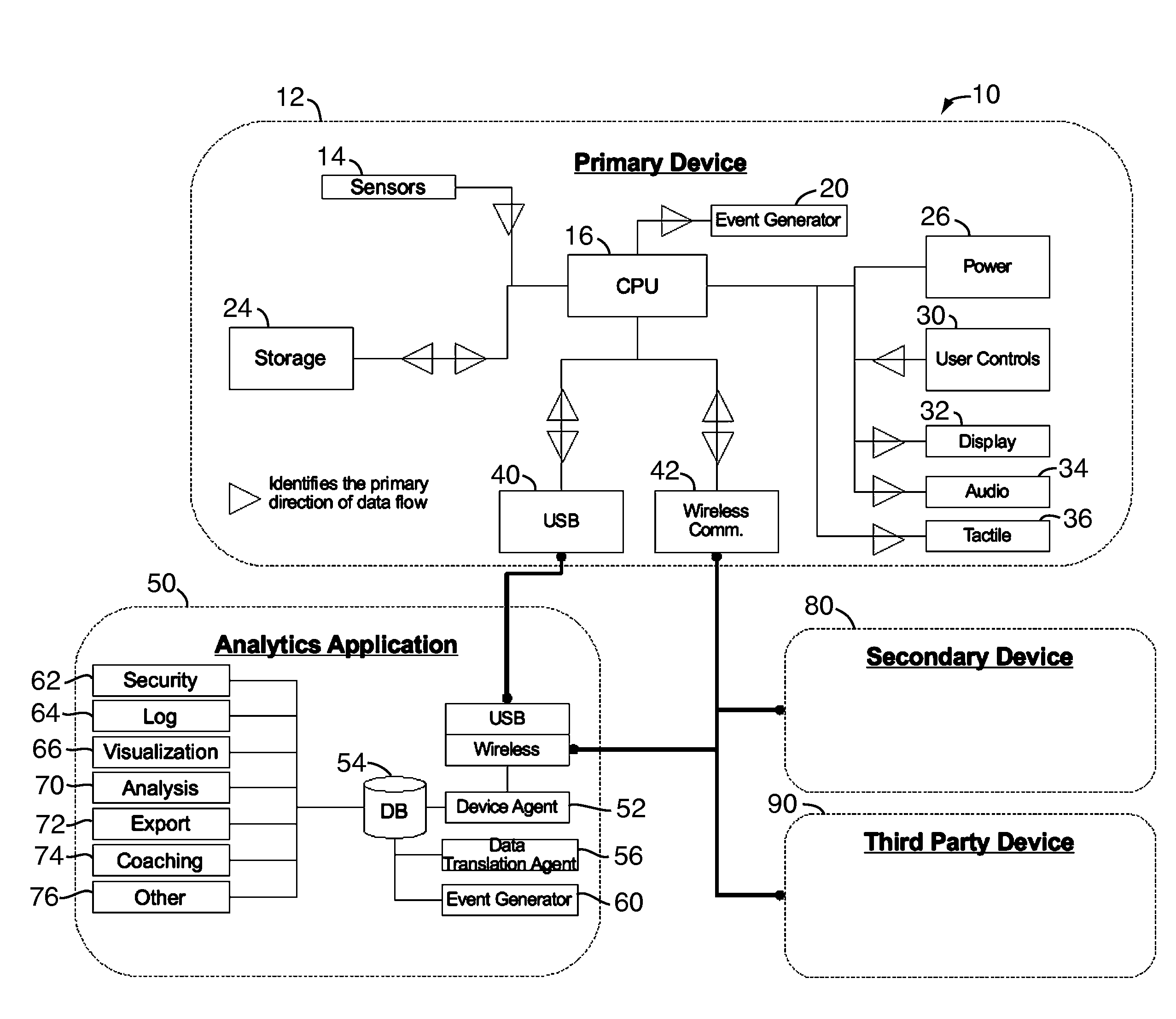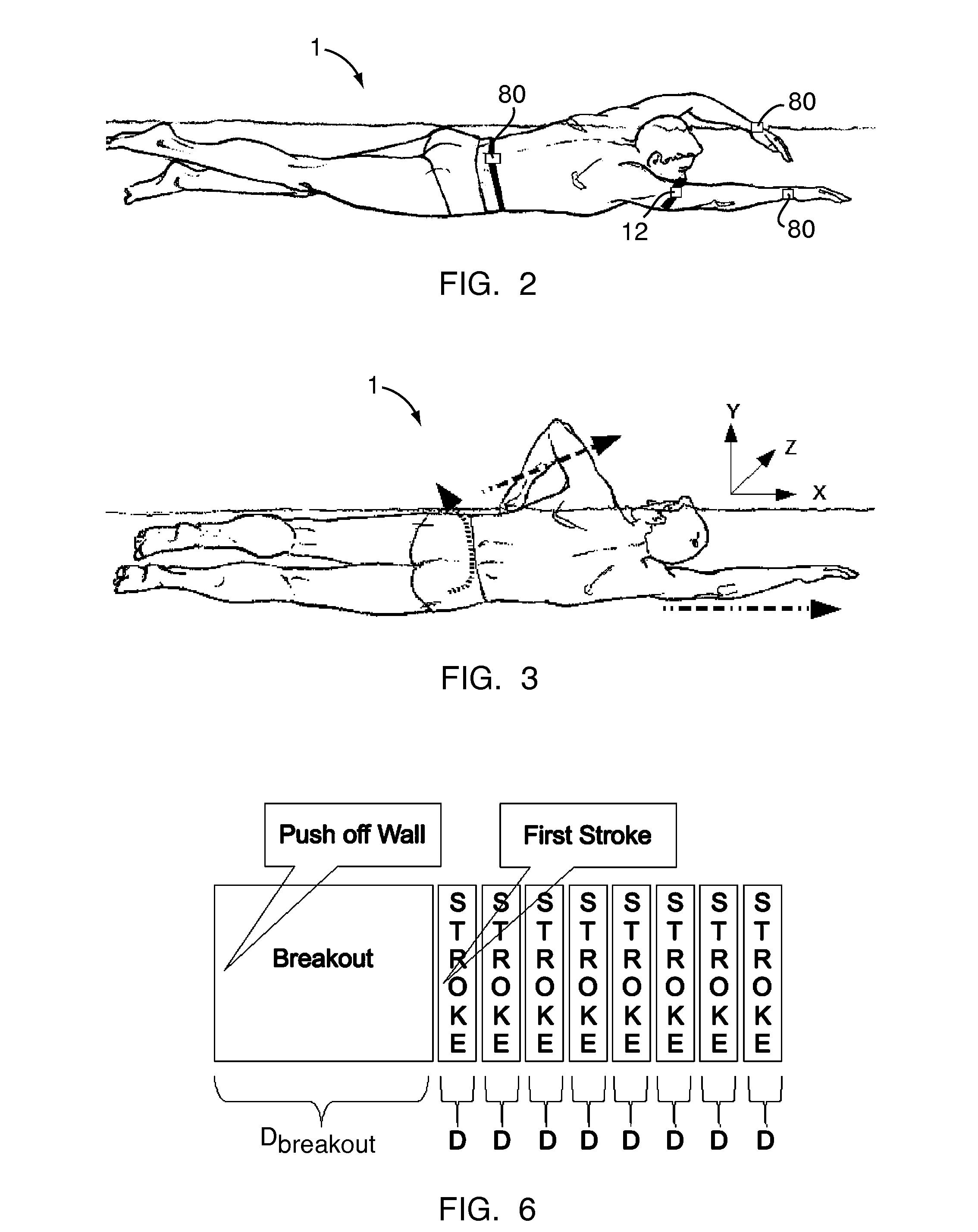Multi-state performance monitoring system
a performance monitoring and multi-state technology, applied in the field of systems and methods for monitoring human performance, can solve the problems of inability or capacity of existing solutions to monitor multiple specific attributes of human performance, inability or capacity to set detailed performance goals, and inability to capture specific performance metrics. a wide range of activities
- Summary
- Abstract
- Description
- Claims
- Application Information
AI Technical Summary
Benefits of technology
Problems solved by technology
Method used
Image
Examples
Embodiment Construction
[0028]The present invention relates to improved systems and methods for sensing, monitoring, tracking and / or analyzing human performance in various states. As will be readily appreciated by those skilled in the pertinent art, the systems and methods disclosed herein are described in athletic applications, particularly in swimming applications, but may also be utilized or employed in many applications relating to human performance. The advantages and other features of the systems and methods disclosed herein will become more readily apparent from the following detailed description of the invention taken in conjunction with the drawings, which set forth certain currently preferred representative embodiments of the present disclosure.
[0029]Referring to FIG. 1, a multi-state system 10 for monitoring human performance includes a primary device 12, an analytics application 50, a secondary device 80 and a third-party device 90. The primary device 12 serves as a sensing device, data aggrega...
PUM
 Login to View More
Login to View More Abstract
Description
Claims
Application Information
 Login to View More
Login to View More - R&D
- Intellectual Property
- Life Sciences
- Materials
- Tech Scout
- Unparalleled Data Quality
- Higher Quality Content
- 60% Fewer Hallucinations
Browse by: Latest US Patents, China's latest patents, Technical Efficacy Thesaurus, Application Domain, Technology Topic, Popular Technical Reports.
© 2025 PatSnap. All rights reserved.Legal|Privacy policy|Modern Slavery Act Transparency Statement|Sitemap|About US| Contact US: help@patsnap.com



